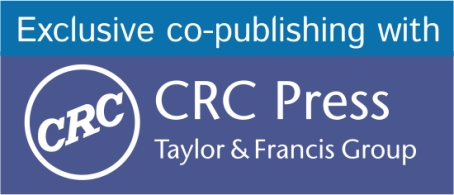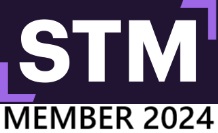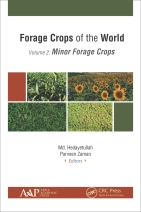|
|
Reviews “A great source of information for readers interested in forage crops . . . A detailed account of forage crops . . . The books are a great read for people involved with fodder production and for people practicing sustainable agriculture, who can explore dual-purpose cropping allowing them to cultivate food and fodder together. The reader is introduced to very effective cultivation methods including intercropping as well as agronomic management, post harvesting technologies, and storage and packaging of fodder. . . . Useful for researchers and ecologists conducting studies on forage crops, especially focusing on the impact of climaie change on crops.” —Economic Botany, 2019, review by Anbreen Bashir, Harris-Stowe State Univesity, Missouri, USA “A good compilation of all the important forage crops. Scattered information on various aspects of forage crops, including varieties, botanical details, cultural practices, pest-disease problems, climate change, etc., has been nicely compiled in one place. The information provided is aptly compiled and put together. The book provides a handy guide to all the stakeholders, including policy planners, students, teachers, dairy owners, and forage growers.” —Dr. Ajoy Kumar Roy, FNAAS, MNASc, FRMSI, FISG, Indian Grassland and Fodder Research Institute Now Available in Paperback This new book, Forage Crops of the World, Volume II: Minor Forage Crops, discusses the importance of fodder production of the minor fodder crops for animals. It focuses on fodder production for the 25 minor forage crops, including non-leguminous perennial forages, leguminous forages, and non-leguminous and non-graminaceous forages. It discusses crop production methodology and agronomic management in a systemic way, providing an abundance of information on each type of forage crop discussed, including preferred soil type, land capability, cropping patterns, climate, and socioeconomic conditions. It goes on to address pests of leguminous forage crops, disease management of non-leguminous seasonal forages, agroforestry in fodder and forage crops, preservation of forage crops, and forage production and climate change. Forage crops are very essential for quality milk and meat production. Farm animals are normally fed fodder available from cultivated areas, supplemented by a small extent with harvested grasses and top feeds. The three major sources of fodder are crop residues, cultivated fodder, and fodder from trees, pastures, and grazing lands. The patterns and types of fodder crops vary by geographical location. With the amount of land under cultivation decreasing, there are limited resources for growing fodder crops, so new trends and solutions are emerging, such as dual purposes crops and using land that normally remains fallow throughout the year. This volume, Forage Crops of the World, Volume II: Minor Forage Crops, provides valuable information needed for effect forage crop production and management. The book, with chapters from highly qualified scientists, will be a rich resource for researchers, academicians, students, and those in the industry. Forage Crops of the World, Volume I: Major Forage Crops focuses on major forage crops. Key features:
Click here for information on Volume 1 See information on the complete set here: Forage Crops of the World, 2-volume set CONTENTS: About the Authors / Editors: Editors: Md. Hedayetullah, PhD Assistant Professor/Scientist and Officer In-Charge, AICRP (All India Coordinated Research Projects) on Chickpea, Directorate of Research, Bidhan Chandra Krishi Viswavidyalaya, Kalyani, Nadia, West Bengal, India Md. Hedayetullah, PhD, is an Assistant Professor/Scientist and Officer In-Charge, AICRP (All India Coordinated Research Projects) on Chickpea, Directorate of Research, Bidhan Chandra Krishi Viswavidyalaya, Kalyani, Nadia, West Bengal. He is a former Agronomist with the NABARD, Balasore, Odisha, India. He was also formerly a Professor at the M.S. Swaminathan Institute of Agriculture Science, Centurion University of Technology and Management, Gajapati, Odisha, India, and an Assistant Professor at the College of Agriculture, Tripura, Government of Tripura, India. Dr. Hedayetullah is the author and co-author of 20 research papers, five review papers two book chapters, and one book. Dr. Hedayetullah acquired his BS degree (Agriculture) from H.N.B. Garhwal University, UK, India. He received his MS degree (Agronomy) from Palli Siksha Bhavana, Institute of Agriculture, Visva Bharati University, Sriniketan, West Bengal, India. He received his PhD (Agronomy) from Bidhan Chandra Krishi Viswavidyalaya, Mohanpur, Nadia, West Bengal, India. He was awarded the Maulana Azad National Fellowship Award from the University Grant Commission, New Delhi, India. He has received several fellowship grants from various funding agencies to carry out his research works during his academic career. Parveen Zaman, PhD Assistant Director of Agriculture (Farm) at the Pulse & Oilseed Research Sub-Station, Beldanga, Department of Agriculture, Government of West Bengal, India Parveen Zaman, PhD, is an Assistant Director of Agriculture (Farm) at the Pulse & Oilseed Research Sub-Station, Beldanga, Department of Agriculture, Government of West Bengal, India. She is author and co-author of four research papers, three review papers, and four book chapters. She acquired her BS degree (Agriculture), receiving a Gold Medal, from Bidhan Chandra Krishi Viswavidyalaya, Mohanpur, Nadia, West Bengal, India. She received MS degree (Agronomy), also with Gold Medal, from Bidhan Chandra Krishi Viswavidyalaya, Mohanpur, Nadia, West Bengal, India. She was awarded the Maulana Azad National Fellowship Award from the University Grants Commission, New Delhi, India, and has received several fellowship grants from various funding agencies to carry out her research works during her academic career. |

 Follow us for the latest from Apple Academic Press:
Follow us for the latest from Apple Academic Press:
New Book Series: AAP Advances in Materials, Manufacturing & Computational Intelligence Techniques plans to offer a comprehensive exploration of cutting-edge research and applications in various engineering and scientific fields. This multidisciplinary series caters to a wide range of readers, from researchers and academics to industry professionals, providing in-depth knowledge and practical insights into solving complex problems. The series explores into a diverse array of topics, including advanced materials, manufacturing techniques, and computational intelligence. For more information, visit:
Click here
AAP WELCOMES PROF. MOHAMMED KUDDUS, PhD, AS AAP’S NEW ACQUISITIONS EDITOR for books on biotechnology, enzymology, microbiology, bioinformatics, bioremediation, biomedical technology, value-added products etc. Dr. Kuddus is Head of the Department of Biochemistry at the College of Medicine, University of Hail, Kingdom of Saudi Arabia. He is listed in Elsevier/Stanford University World’s Top 2% Scientists. He seeks book proposals from potential editors to consider for publication with Apple Academic Press. Contact: kuddus@appleacademicpress.com for more information. AAP welcomes Dr. Maulin P. Shah as AAP’s new acquisitions editor for books on Applied Microbiology, Environmental Biotechnology and Waste Management. Dr. Shah, a Scientist in the Industrial Wastewater Research Lab at Enviro Technology Ltd., India. seeks book proposals to consider for these topics and related areas: applied microbiology, environmental biotechnology and waste management, including environmental pollution, wastewater treatment, bioenergy, biofuel, circular economy, leachate treatment activated sludge process, environmental microbiology, agricultural microbiology, advance oxidation process, bio-electrochemical systems, bacterial genomics for wastewater treatment, and heavy metal remediation. maulinshah1979@gmail.com for more information. AAP is pleased to announce Shrikaant Kulkarni, PhD, as our new Senior Commissioning Editor for books in the areas of Polymer Sciences, Chemical Sciences, Nuclear Sciences, and Material Sciences. Dr. Kulkarni is Adjunct Professor, Faculty of Business, Victorian Institute of Technology, Melbourne, Australia; and Adjunct Professor, Centre of Research Outcome and Impact, Chitkara University, Punjab, India. You can reach him at Email: srkulkarni21@gmail.com for more information. New Book Series: AAP Series on Waste Biomass Valorization will explore the transformation of biomass resources into valuable products, addressing the growing need for sustainable alternatives to fossil fuels and non-renewable resources. For more information and to propose a book, please visit: Click here Congratulations to Hafiz Ansar Rasul Suleria, PhD, for receiving the Dean’s Award for Excellence in Research from the University of Melbourne, Australia, in recognition for his exceptional performance and strong commitment to advanced research in food science. Dr. Suleria is editor of AAP’s book series Innovations in Plant Science for Better Health: From Soil to Fork. For more information, visit: Click here Congratulations to Dr. Christian Mancas. His book Conceptual Data Modeling and Database Design: A Fully Algorithmic Approach was one of the 6 Best Data Modeling ebooks for Beginners by BookAuthority, a leading site for book recommendations. For more information, visit: Click here COMMENTS FROM AAP EDITORS AND AUTHORS AAP book title: Advances in Audiology and Hearing Science (2-volume set) “I have collaborated with AAP during the process of bringing my two-volume editing work to a final publishing phase. AAP support has been truly important throughout the initial and final stages of the book. While the majority of the publishing work is done at the early stages, the final touches that include the last-minute corrections of the authors are extremely crucial to the quality the book tries to convey. The assistance of AAP during the last stages of corrections and communication with the authors was a very positive contributor to my state of mind during those stressful moments. I recommend the publishing experience with AAP to other editors of scientific material.” —Stavros Hatzopoulos, PhD, Hearing Science Laboratory, University Hospital of Ferrara, Ferrara, Italy AAP book title: Nanotechnologies: The Physics of Nanomaterials (2-volume set) “I was very pleased with the interaction and support of the team at Apple Academic Press. They provided me with regular and useful information and updates throughout the publishing procedure. I am also very happy with the final product, which is of good quality. The books are now available and are professionally distributed through the various channels. I would like again to thank the team at AAP for all their hard work and support.” —David Schmool, PhD, Director, Groupe d’Etude de la Matière Condensée GEMaC, National Centre for Scientific Research, Université de Versailles/Saint-Quentin, Université Paris-Saclay,Versailles, France AAP book title: Physiology of Molluscs (2-volume set) “I have enjoyed the full benefit of support, encouragement, and kindness from the members of AAP I have had the pleasure of being associated with. In the same vein, I hope AAP was satisfied with the book series I have edited in advancing the knowledge. It has been a great journey and was a great pleasure and satisfaction. Advancing scholarship through publications is one of the best routes publishers can take, and I would hold AAP as one of the best ones.” —Saber Saleuddin, PhD, University Professor Emeritus, Department of Biology, York University in Toronto, Ontario, Canada AAP book title: Green Chemistry and Sustainable Technology: Biological, Pharmaceutical, and Macromolecular Systems “It had been my pleasure to work with the production team of Apple Academic Press for almost a decade. The best presentation of our work was due to their hard work and with careful scrutiny. I am sure that every one of them takes extra pains to publish the book nicely, maintaining the quality and timeliness. It was a rewarding experience to work with AAP. I would like to publish more with AAP on my upcoming projects in future also.” —Prof. Suresh C. Ameta, Professor of Eminence (Distinguished Professor), Faculty of Science, PAHER University, UDAIPUR, India AAP book title: New Frontiers in Nanochemistry, 3-volume set, plus many others "Publishing a book, either as author or editor, is a journey from the initial vibration to the piece of knowledge towards the present future of humanity at large. Such a journey is about climbing and tunneling, about diving and driving through, about inspiration and tuning, about hard working in every instance; and it is also about time. Very few Global Publishers have the wisdom and patience and kindness and openness to authors, contributors, and readers while being truly crafting oriented as Apple Academic; yet all is about people and their education, vision and assumed mission; the Apple Academic Team heartily succeed that in achieving the world class scholarly acclaim by the quality involvement in all chain of plus value added with each publishing event. Hearty Compliments! Excelsior Apple Academic!" —Mihai V. Putz, PhD, Dr.-Habil., MBA, Professor, Faculty of Chemistry, Biology, Geography, Laboratory of Computational and Structural Physical Chemistry for Nanosciences and QSAR, West University of Timi?oara; PI-1, Laboratory of Renewable Energies - Photovoltaics, National Research and Development Institute for Electrochemistry and Condensed Matter (INCEM), Timi?oara, Romania AAP book title: The Chemical Century: Molecular Manipulation and Its Impact on the 20th Century “All my experiences with AAP have been very positive. I entrusted AAP with the publication of The Chemical Century: Molecular Manipulation and Its Impact on the 20th Century and found the quality of the book that they produced to be excellent. My two contacts at the company were very responsive and efficient throughout the publication process.” —Richard J. Sundberg, PhD, Professor of Chemistry, University of Virginia, Charlottesville, Virginia, USA AAP book titles: Medical Tourism and Wellness: Hospitality Bridging Healthcare (H2H)© and Medical Travel Brand Management: Success Strategies for Hospitality Bridging Healthcare (H2H) “I have enjoyed my scholarly creative work with Apple Academic Press. They have been timely, creative, and very helpful for my two books with them. I encourage you to consider publishing your work with AAP.” —Frederick DeMicco, PhD, RDN, Executive Director and Professor School of Hotel and Restaurant Management, Northern Arizona University, Flagstaff, Arizona AAP book title: The Chemical Evolution of Phosphorus: An Interdisciplinary Approach to Astrobiology “I’m very pleased with the books you have edited. It shows a very good and careful work by everyone involved along the whole production process, and so the final result is a beautiful piece: it has come out as a very nice and appealing book, easy to handle and read, .... and hopefully of interest for people from diverse related fields!” —Enrique Macia-Barber, PhD, Professor of Condensed Matter Physics, Universidad Complutense de Madrid, Spain |



